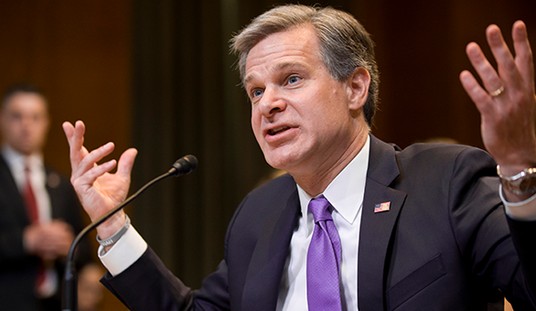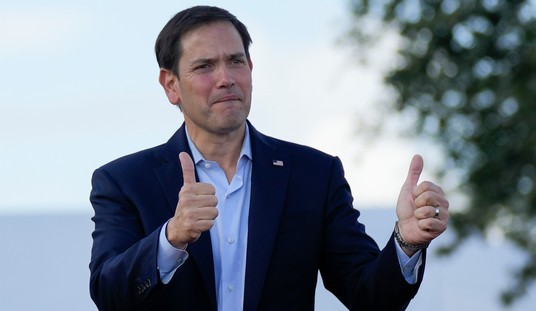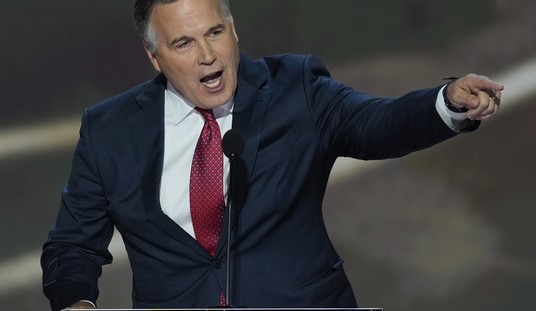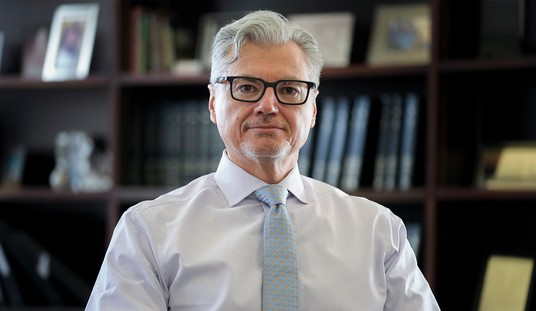The long-running debacle over the Eisenhower Memorial in Washington, D.C., is a textbook case of corruption. A great deal of money sloshes around without any accountability, pocketed by those with connections and without scruples, in the name of doing good. It's a sucker's game, at which taxpayers always lose. The Eisenhower Memorial travesty is more offensive than the usual palm greasing, because the greatness of an American hero is being lost.
"You like Ike. I like Ike. Everybody likes Ike for president." So ran the campaign ditty from 1952. It was pretty well true. The former 5-star general won 39 states to Adlai Stevenson's nine in the election of 1952. Even among those who voted Democrat, most probably would agree that they liked Ike. Both parties had courted him to run. He was the most admired man in the nation for more years than any other figure since Gallup began asking the question.
Americans may have liked Ike's broad grin, but when they drafted him for president in 1952, it wasn't a celebrity they were after. They understood that Dwight Eisenhower had demonstrated the firmest possible leadership as Supreme Allied commander in World War II. The task nearly killed him, with its constant worry, diplomatic headaches, feuding prima-donna generals, little food and four packs of cigarettes a day. Without him, it's not clear that the Allies would have defeated the Nazi empire.
While he had a friendly grin, he was steely. He had no illusions about the dark side of humanity. In April 1945, touring a Nazi concentration camp, he wrote prophetically to George C. Marshall: "The things I saw beggar description. ... The visual evidence and the verbal testimony of starvation, cruelty and bestiality were so overpowering as to leave me a bit sick. In one room, where they were piled up twenty or thirty naked men, killed by starvation, George Patton would not even enter. ... I made the visit deliberately, in order to be in position to give first-hand evidence of these things if ever, in the future, there develops the tendency to charge these allegations merely to 'propaganda.'"
Recommended
As president, he facilitated the building of the interstate highway system, strengthened NATO, began the desegregation of schools (by force), balanced the budget and presided over a period of spreading prosperity and cultural vibrancy.
He deserves to be remembered -- but modern Washington doesn't seem equal to the task.
Oh, there's a plan, all right. The Eisenhower Memorial Commission was established in 2002 with a budget of $64 million. It is staffed by nine full-time employees, some earning six-figure salaries, and presided over by a 93-year-old ailing board chairman.
Without a design competition, the commission chose a design by Frank Gehry that critics, including the Eisenhower family, regard as insulting to Eisenhower's memory. Featuring enormous metal "tapestries" eight stories tall that would depict the Kansas prairie, the block-long memorial park with its enormous metal curtains would dwarf the statuary in the center. The original design called for Ike to be portrayed as a barefoot boy. Thus is a key figure in the history of the 20th century reduced to insignificance. Historians sometimes do that to people -- memorials are meant to do the reverse.
The boy Ike has since been replaced, after protests, with a proposed statue of Ike as a cadet. Not much better. West Point has produced many cadets but only one Eisenhower. Gehry now proposes to eliminate the tapestries but keep the pillars. Commission member Bruce Cole, who believes a simple statue of the man would have been best (and most consistent with Ike's wishes), says the pillars standing alone "look for all the world like industrial smokestacks." Others say they evoke an unfinished highway overpass or the final scene of "Planet of the Apes."
Since the memorial has been stalled, you may ask, what happened to the money? After 15 years, the commission has spent $41 million, including paying Gehry 95 percent of the price of construction drawings before the design was approved. According to the Washington Examiner, Gehry used some of the $15 million he received to hire former counsel to President Clinton Gregory Craig to help secure approval of the design. That's how it goes when you're well connected in Washington.
Republicans in Congress declined the commission's request for $50 million more. They appropriated just $1 million last year, which still leaves the corrupt commission in business. Is this farce to be the only memorial to one of our greatest leaders?

























Join the conversation as a VIP Member